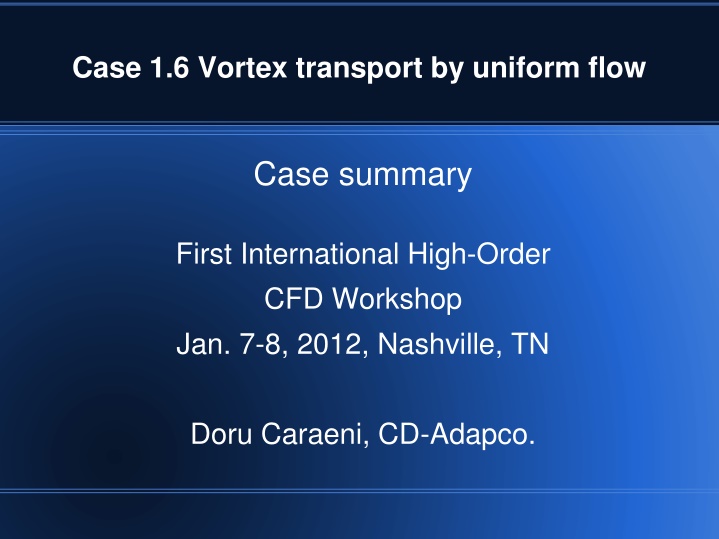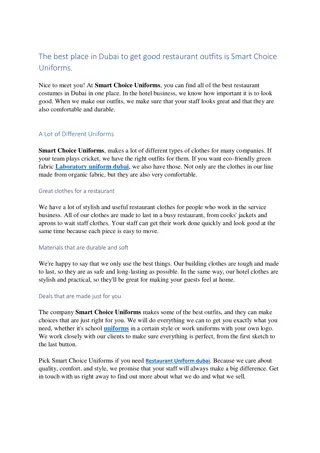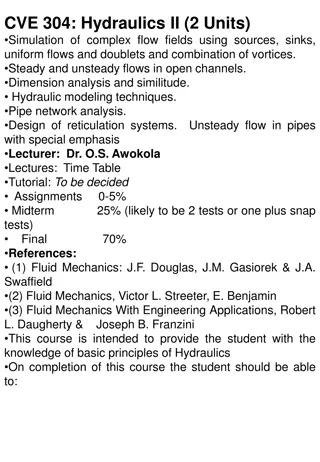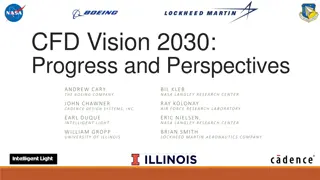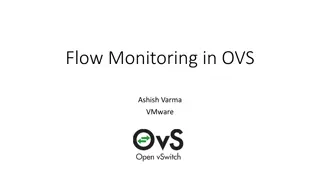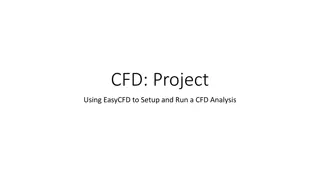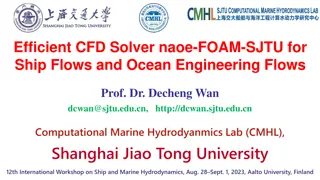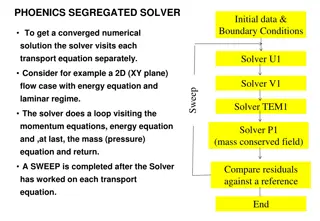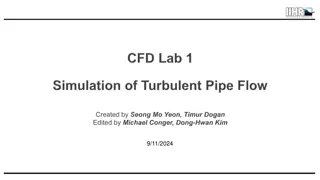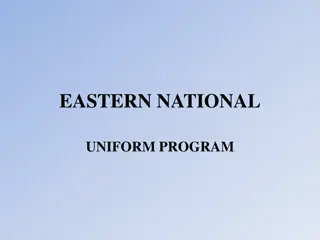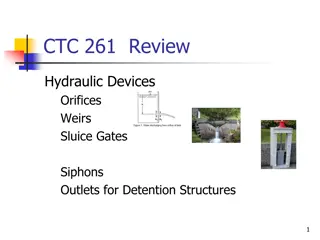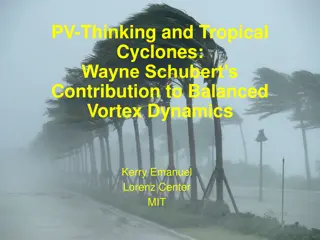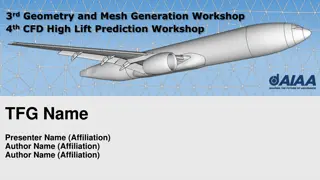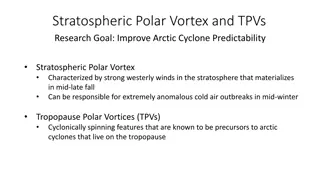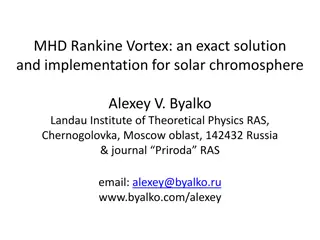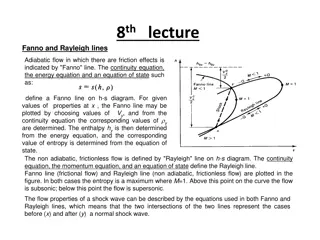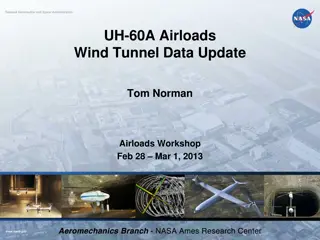Vortex Transport by Uniform Flow - High-Order CFD Workshop Summary
Vortex transport by uniform flow case study presented at the First International High-Order CFD Workshop in 2012. It focuses on assessing the efficiency of high-order methods for LES/DES of turbulent flows and comparing them with state-of-the-art 2nd order FV algorithms. The case involves a very low Mach number flow with challenges for explicit solvers due to time-step restrictions. Various high-order algorithms are proposed for comparison, and the state-of-the-art 2nd order FVM solver used is detailed along with results from a 5th order DG uniform mesh analysis.
Uploaded on Oct 10, 2024 | 1 Views
Download Presentation

Please find below an Image/Link to download the presentation.
The content on the website is provided AS IS for your information and personal use only. It may not be sold, licensed, or shared on other websites without obtaining consent from the author.If you encounter any issues during the download, it is possible that the publisher has removed the file from their server.
You are allowed to download the files provided on this website for personal or commercial use, subject to the condition that they are used lawfully. All files are the property of their respective owners.
The content on the website is provided AS IS for your information and personal use only. It may not be sold, licensed, or shared on other websites without obtaining consent from the author.
E N D
Presentation Transcript
Case 1.6 Vortex transport by uniform flow Case summary First International High-Order CFD Workshop Jan. 7-8, 2012, Nashville, TN Doru Caraeni, CD-Adapco.
Case 1.6 Vortex transport by uniform flow Canonical test case to: Assess efficiency of HO methods for LES/DES of turbulent flows, Compare relative efficiency of different unsteady HO methods, Compare HO algorithm's efficiency with state-of-art 2ndorder FV algorithm.
Case 1.6 Vortex transport by uniform flow Case definition:
Case 1.6 Vortex transport by uniform flow Very low Mach number flow (Mach = 0.05) Large disparity between the sound and flow speed Difficulties expected for explicit solvers due to time-step restriction
Case 1.6 Vortex transport by uniform flow High-order algorithms proposed -Wang & Li : CPR-DG, p =1..5, RK 4th order - -Bassi & Nigro : DG, p = 2 ..6, TVD-RK 3rd order, SSP-RK 4th order - Fidkowski : DG, p = 0 .. 3, RK - Tu : DG-CVS, p = 3, space-time formulation
Case 1.6 Vortex transport by uniform flow State-of-art 2nd order FVM solver: - Roe FDS flux discretization, - Low Mach number preconditioning, - Implicit 2nd order time discretization (dual time stepping), - Solution reconstruction using LSQ - Reconstruction gradients limiting using a low dissipation differentiable limiter - Time-step was selected sufficiently small to not affect accuracy (for a convective Courant ~0.25)
Case 1.6 Vortex transport by uniform flow 1.0E+00 FVM - P1 CPR-DG P1 CPR-DG P2 CPR-DG P3 BA-DG P2 BA-DG P3 BA-DG P4 BA-DG P5 CVS-DG KF DG P0 KF -DG P1 KF - DG P2 KF-DG P3 1.0E-01 Volume avg. L2-norm u-error 1.0E-02 1.0E-03 1.0E-04 1.0E-05 1.0E-06 1 10 100 1000 10000 100000 1000000 Work units
Case 1.6 Vortex transport by uniform flow 5th order DG uniform mesh results
Case 1.6 Vortex transport by uniform flow 5th order DG Perturbed mesh results (some wiggleness)
Case 1.6 Vortex transport by uniform flow Summary of results: Three versions of DG algorithms were compared The big absents are : - High order (reconstruction based) FVM ? - High-order Multidimensional-Upwind schemes, - Spectral elements, High-order spectral finite differences, etc. All HO results show a big advantage of using HO time/space discretization. Results show that HO methods can bring a leap in efficiency of solving unsteady flows (LES/DES,URANS)
Case 1.6 Vortex transport by uniform flow Challenges of LES/DES of turbulent flows: Large variety of turbulent/vortical scales, Vorticity preservation and kinetic energy preservation (in incompressible flows) is essential for success, Grid size changes, cell stretching and skewness can be important, Explicit schemes are probably not be able to cope with extreme time-step limitations due to viscous stability conditions, How the new HO algorithms are going to be fitted into current commercial CFD codes architecture ?
